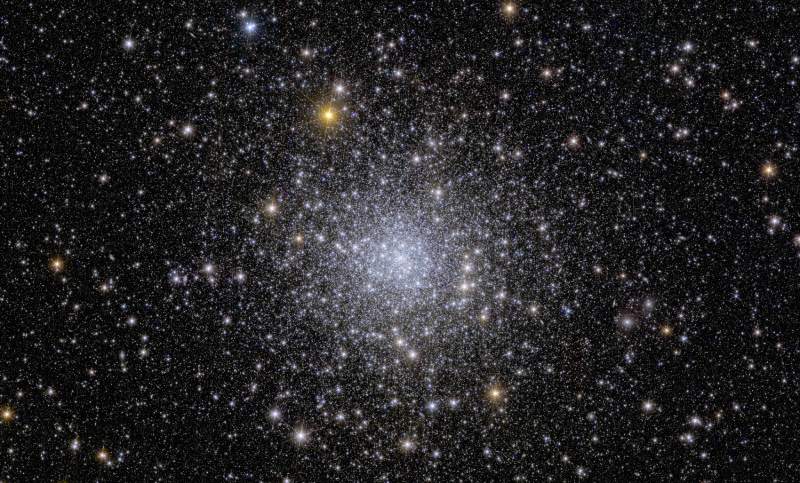The Hubble Space Telescope refined the light entering our galaxy, producing an amazing picture in which individual stars appear to be embracing one another.
The reason stars cluster together, whether dozens or millions, is mainly due to their gravitational influence on one another. Space has stable areas created by this gravitational force where stars and their offspring aren’t flying away.
NASA, which co-manages Hubble with the European Space Agency, claims that this security keeps very old star populations alive. These locations, known as globular clusters, resemble ancient structures. They provide a wealth of information about the universe’s prehistory.
Hubble looked at a globular cluster outside of the Milky Way in a recently released photograph. The 33-year-old telescope peered into the Large Magellanic Cloud, a region of the southern sky. It looks like the fingerprint a finger leaves on a window, but it’s actually a satellite galaxy. The new image shows a cluster of stars near the constellation Dorado (The Swordfish), some 157,000 light-years from Earth.
How does a globular cluster look inside?
NGC 2210 is this bright globular cluster that is packed with a wide variety of stars.
A unique location are globular clusters. According to an image description released by NASA on Friday, “the night sky would look very different from the perspective of an inhabitant of a planet orbiting one of the stars in the center of a globular cluster: The sky would appear to be stuffed full of stars in a stellar environment that is thousands of times more crowded than our own.”
From this, what can astronomers learn?
Recent analysis of the light emitted by NGC 2210 by astronomers has revealed evidence of the globular cluster’s ancient age. Based on its estimated age of 11.6 billion years, the cluster appears to be only a few billion years younger than the universe.
However, scientists have discovered other ones that are older. It’s possible that some of the other clusters in the Large Magellanic Cloud are older than 13 billion years. For background, the age of the universe is 13.8 billion years. This agrees in part with the ages of the oldest Milky Way globular clusters. If astronomy and archaeology are comparable fields, then these globular clusters can be thought of as contemporaneous ancient structures that are located in various galaxies.
Topics #ancient #Astronomers #European Space Agency #galaxy #globular cluster #Hubble #Hubble Scope #news #Universe










